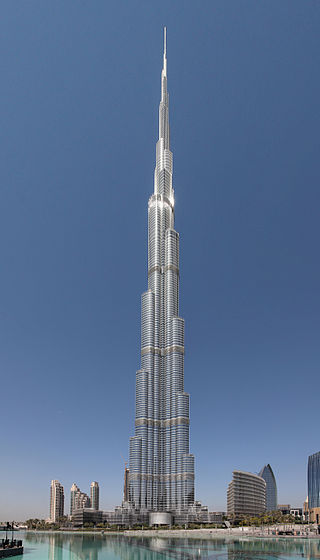
A skyscraper is a tall continuously habitable building having multiple floors. Modern sources define skyscrapers as being at least 100 meters (330 ft) or 150 meters (490 ft) in height, though there is no universally accepted definition, other than being very tall high-rise buildings. Skyscrapers may host offices, hotels, residential spaces, and retail spaces.
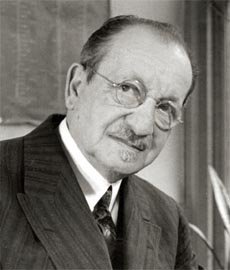
Emery Roth was a Hungarian-American architect of Hungarian-Jewish descent who designed many New York City hotels and apartment buildings of the 1920s and 1930s, incorporating Beaux-Arts and Art Deco details. His sons continued in the family enterprise, largely expanding the firm under the name Emery Roth & Sons.

The architecture of Houston includes a wide variety of award-winning and historic examples located in various areas of the city of Houston, Texas. From early in its history to current times, the city inspired innovative and challenging building design and construction, as it quickly grew into an internationally recognized commercial and industrial hub of Texas and the United States.

Guangzhou International Finance Center or Guangzhou West Tower, is a 103-story, skyscraper at Zhujiang Avenue West in the Tianhe District of Guangzhou, Guangdong. One half of the Guangzhou Twin Towers, it is the 24th tallest building in the world, completed in 2010. As of 2023, it is the world's tallest building with a rooftop helipad, at. The world's second-tallest building with a rooftop helipad was also completed in 2010: Beijing's China World Trade Center Tower III, whose roof-top helipad is 330 m high. Both buildings are taller than the U.S. Bank Tower, the previous record-holder from 1989 to 2010, whose roof-top helipad is 310.3 m (1,018 ft) high.
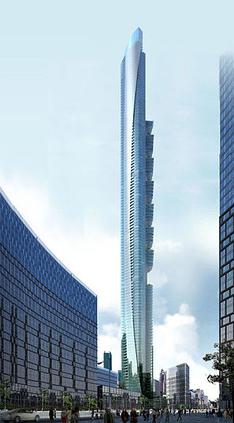
The Pentominium was a planned 122-storey, 517 m (1,696 ft) supertall skyscraper located in Dubai, United Arab Emirates. Construction on the tower was halted in August 2011. It was designed by Andrew Bromberg of architects Aedas and funded by Trident International Holdings. The AED 1.46 billion construction contract was awarded to Arabian Construction Company (ACC).
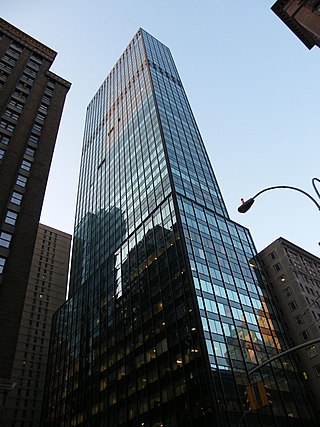
888 Seventh Avenue is a 628 ft (191m) tall modern-style office skyscraper in Midtown Manhattan which was completed in 1969 and has 46 floors. Emery Roth & Sons designed the building. 888 Seventh Avenue is L-shaped in plan, with wings extending north to 57th Street and east to Seventh Avenue, around the adjacent Rodin Studios. It currently carries the Vornado Realty Trust corporate headquarters. Previously known as the Arlen Building, it had been named for the company responsible for its construction, Arlen Realty & Development Corporation. The Red Eye Grill is located in the building at street level.

Goldin Finance 117, also known as China 117 Tower, is a unfinished supertall skyscraper in Xiqing District, Tianjin, China. The tower was topped out in 2015 at a height of 597 m. It has 128 storeys above ground, with 117 of them intended for housing, hotel, and commercial space, which provides the source of the building’s name. Designed by P&T Group, construction began in 2008 but was twice halted. As of December 2024, it remains unfinished and unoccupied.
The Bank of the Southwest Tower was a proposed building located in Houston, Texas, at 1,404 ft tall. It would have been the second tallest building in North America after the Willis Tower in Chicago. With an estimated construction cost of $350–400 million, the project was cancelled before construction commenced, due to lack of funds during the economic downturn.
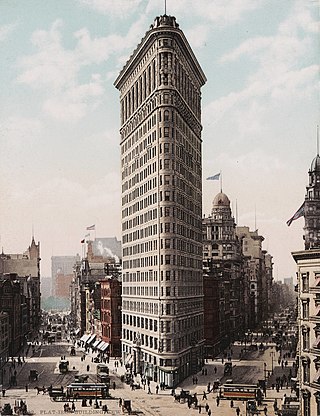
The earliest stage of skyscraper design encompasses buildings built between 1884 and 1945, predominantly in the American cities of New York and Chicago. Cities in the United States were traditionally made up of low-rise buildings, but significant economic growth after the American Civil War and increasingly intensive use of urban land encouraged the development of taller buildings beginning in the 1870s. Technological improvements enabled the construction of fireproofed iron-framed structures with deep foundations, equipped with new inventions such as the elevator and electric lighting. These made it both technically and commercially viable to build a new class of taller buildings, the first of which, Chicago's 138-foot (42 m) tall Home Insurance Building, opened in 1885. Their numbers grew rapidly, and by 1888 they were being labelled "skyscrapers".








